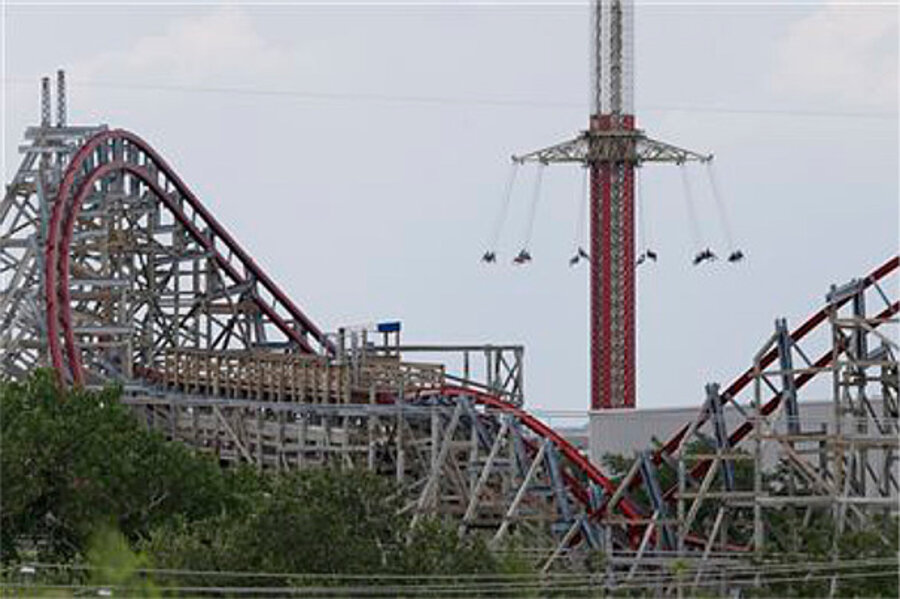Six Flags death: Texas roller coaster had a history of injuries
Loading...
| DALLAS
Nearly a dozen people reported being injured in the last five years while riding the Texas roller coaster where a woman fell to her death last week, though the most serious injuries appear to be a concussion and muscle strains due to jostling, state records show.
Six Flags Over Texas reported 14 injuries involving the Texas Giant roller coaster between April 2008 and April 2013, according to Texas Department of Insurance records. Three happened before or after the ride, such as tripping on the steps leading to the ride.
Department spokesman Jerry Hagins said the ride was currently closed and wouldn't reopen until the department sees a new safety inspection report.
Amusement park safety analyst Ken Martin noted that such injuries are self-reported, so it's hard to gauge their accuracy. He also said such numbers don't include "near-misses."
"The numbers that we hear about are typically the tip of the iceberg," he said.
Rosa Ayala-Goana fell while riding the roller coaster Friday at the Six Flags amusement park. A witness told local media that Ayala-Goana expressed concern moments before the 14-story ride began that the safety bar had not completely engaged.
The Tarrant County medical examiner's office confirmed Monday that the 52-year-old suffered "multiple traumatic injuries" in the fall.
A man who identified himself as Ayala-Goana's son declined comment.
Walter Reiss, an amusement park ride safety inspector, said fatal accidents on roller coasters "are very unusual and infrequent." He added, "Most times that you have death accidents, it was something either ignorant or human error."
Six Flags Entertainment Corp. president and chief executive officer Jim Reid-Anderson said the company was using "both internal and external experts" to investigate the accident, but he offered no details during a conference call to discuss the company's earnings.
In an e-mail to The Associated Press, Six Flags spokeswoman Sharon Parker said the company "will not release any details pertaining to the investigation until it is complete."
The Texas Giant first opened in 1990 as an all-wooden coaster but underwent a $10 million renovation in 2010 to install steel-hybrid rails before reopening in 2011. The coaster, which can carry as many as 24 riders, has a drop of 79 degrees and a bank of 95 degrees.
Reiss speculated that either Ayala-Goana managed to slip out from behind a locked mechanism or that the harness mechanism failed and it opened.
"At the end of the day, it comes down to whether or not the person fits," he added. "If the harness locks normally, without forcing it, it's OK. And the final say is up to the ride operator to tell you, 'I'm sorry, you can't ride.'"
The roller coaster was issued its most recent safety permit in February and was in compliance with state regulations that require an annual inspection by a qualified engineer, according to state records.
The Dallas Morning News has reported that officials with the roller coaster's German-based car manufacturer, Gerstlauer Amusement Rides, were set to come to inspect the ride. The company could not be reached late Monday by phone, and an e-mail was not immediately returned.
Don Hankins, who inspected the roller coaster in February, did not return a call to The Associated Press.
Meanwhile, Six Flags has temporarily closed the Iron Rattler roller coaster at its Six Flags Fiesta Texas. Park spokeswoman Sydne Purvis said it's a precautionary move until the Texas Giant investigation is completed. Both roller coasters are wooden structures with steel rails.
Associated Press writers Betsy Blaney in Lubbock and Uriel J. Garcia and Nomaan Merchant in Dallas contributed to this report.





